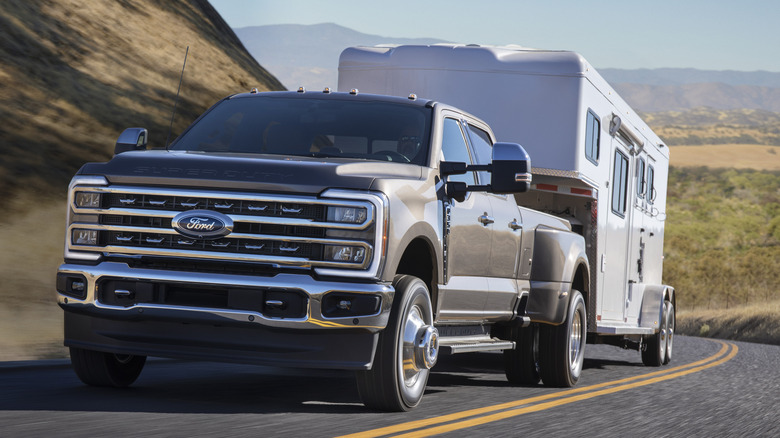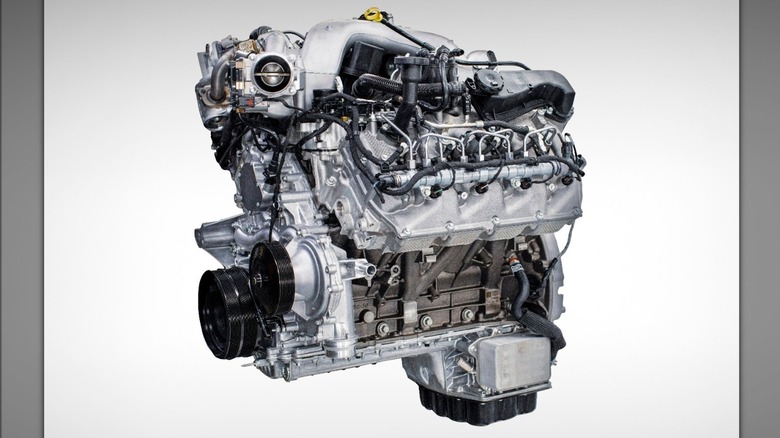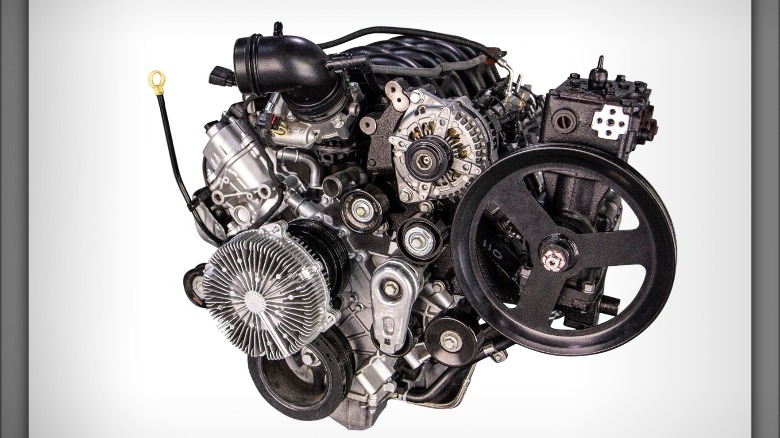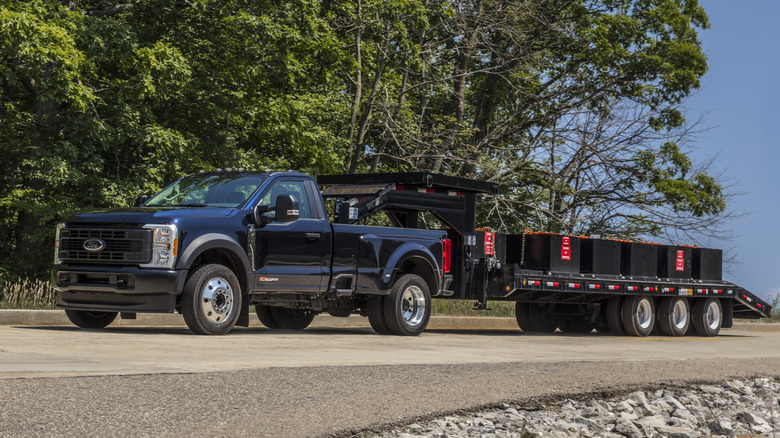The Main Differences Between Ford's 7.3 Gas & 6.7 Diesel Engines
If you're a Ford fan, and you need something hauled, moved, or towed right now, you can't get much better than the Ford Super Duty (also called the F-250, F-350, and so on). Like its smaller brother, the F-150, the Super Duty is offered with a variety of body styles and powerplant choices. The two beefiest engines offered in the Super Duty are the gasoline-powered 7.3-liter V8 and the diesel 6.7-liter "PowerStroke" V8.
Depending on what engine sits inside your Super Duty, it will be more proficient at different kinds of work. But given the choice between a huge gas-powered V8 and a turbocharged diesel engine, what are the main differences that matter?
First and foremost, the engines have different fuel needs. The 7.3-liter V8 is gas powered and the PowerStroke is diesel. In most places, diesel will be the more expensive fuel choice, so if that doesn't sit right with you, you're stuck with the 7.3-liter engine if you want the biggest and best Super Duty engine.
Power differences
Secondly, there's the obvious difference in displacement. While both engines are designed to fit within the engine bay of the truck, and it doesn't make much of a difference when it comes to practicality, the 7.3-liter engine has a substantially larger displacement than the 6.7-liter PowerStroke.
Now, there's the all-important difference in power. Simply put, the PowerStroke option destroys the gas engine in every department where it matters. The turbodiesel 6.7-liter PowerStroke generates 475 horsepower according to Ford and a fairly astonishing 1,050 lb-ft of torque. Comparatively, the 7.3-liter gas engine puts out 430 horsepower and 485 lb-ft of torque. To even further illustrate the divide, the "High-Output" version of the 6.7-liter PowerStroke throws down 500 horsepower and 1,200 lb-ft of torque. The extra juice is accomplished through the addition of a water jacket around the turbocharger, allowing for better cooling and therefore more power. The 7.3-liter gas engine may be bigger, but it's hard to beat turbodiesel torque.
The price divide
Additionally, the use cases of each power plant couldn't be more different. If you just need a truck (albeit a big one like the Super Duty) and you don't plan on towing anything very heavy or using a plow, then the gas-powered 7.3-liter V8 might be the best option for you. However, if you need the biggest and baddest towing machine, the PowerStroke diesel might be your jam.
Lastly, there's the question of price. The 7.3-liter gas engine is included on the XLT-trim level and above Super Duty trucks. As of June 2024, the base model PowerStroke diesel is a $9,995 option, making it incredibly pricey. The "High-Output" version of the PowerStroke will add $12,495, ouch. Diesel power is expensive, but if you need it for your work, it might be worth the several grand upcharge.
Despite it having less power, the gas-powered 7.3 engine isn't necessarily "worse" than the PowerStroke. It's just a different option. It's more about how the engine is used that determines its feasibility.



